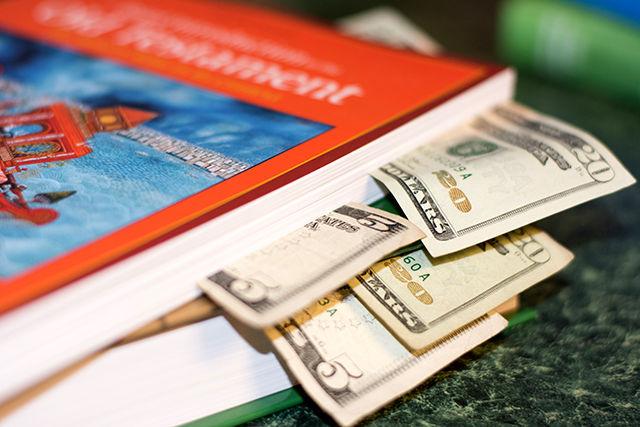
Textbook costs have risen by 82 percent in the last decade according to a study conducted by the Public Interest Research Group. The average college student spends as much as $1,200 on textbooks and course materials each year. This cost has led students to reconsider buying textbooks. The same study showed that 65 percent of students decided against buying a textbook due to the high price.
Despite efforts to reduce expenses for college students, textbook prices remain an additional burden for those students struggling financially to make ends meet.
Anthony Sanders, the associate director of NC State’s bookstore, handles the financial aspects of the store but has a background working with textbooks. Sanders has worked at NC State since 2006, and said that during this time he has strived to make improvements to the bookstore and its website.
Sanders has worked to institute the online comparison site and the View My Books page. He said the inventory management system and the Office of Registration & Records made efforts to provide the integration necessary for students to see, and have the option to buy their required texts when they register for classes.
“The flip side of the price comparison tool is this back office tool from the same company which allows us to analyze market prices,” Sanders said. “We then can view textbooks as a commodity, which students do when they’re shopping online for the best deals, and this tool lets us see where the market prices are compared to our own and where we can lower our prices for students. It also allows us to the opportunity to purchase low-cost inventory from various sources and consolidate those shipments and lower prices. Since we’ve done this, we’ve probably saved students around $200,000 per semester.”
According to Sanders, the earlier the bookstore receives requests from the faculty, the better chance they have of finding low-priced inventory. Sanders said that if you view textbooks as a commodity, the demand goes up closer to the beginning of the semester and, in turn, the prices go up.
“We’re not trying to create a monopoly,” Sanders said. “We’re trying to be as transparent as possible with what we show the students.”
According to Sanders, it is very common for the View My Books page to tell students that the latest edition of a text is required for a course, when in reality the professor has no preference regarding the edition.
“That happens quite often,” Sanders said. “I can remember it happening when I was in school, and again, it’s a teaching moment for us. There is something better that we need to do, maybe outreach to instructors to let them know that they don’t need to use the latest editions and that older editions are available. If the professors don’t tell us that, we can’t know what to recommend to students.”
Chris Vincent, a sophomore studying engineering, has already experienced problems with expensive textbooks. He said the two most expensive textbooks he’s encountered were for his thermodynamics and aerodynamics classes and were priced at $279 and $260, respectively.
“The cheapest option at the time was an e-book rental for 180 days, which cost me $170,” Vincent said. “It was amazing to me that they would charge this much to give me a book which I had to access electronically, and which could only be accessed online for a limited amount of time. I have nothing to show for the $170 I paid for that book now that the rental period is over.”
Some professors, on the other hand, recommend using older editions of books and email students the homework questions from a newer edition, according to Vincent. The time they spend to scan and email a few pages of homework can save students a substantial amount of money.
Robert Schrag and Edward Funkhouser, communication professors, published “The Process: Understanding Communication Technology and the Media” in 2013. The book is only offered as an electronic text.
“The idea behind ‘The Process’ was to create a text that laid a solid foundation to subsequently more specialized courses and price it for students,” Schrag said. “The best book for the lowest price was our objective.”
Schrag said that when developing the text, he told the publisher he wanted the book to cost less than half the price of other communication textbooks.
Offering his text in an electronic format saves money for the publishing house because no trucks, warehouses or shipping costs are involved. But on the other hand, developing customer service for the text also affects the final cost.
Schrag said each student has a unique password to access the most current online version of the text and this password should not be shared with anyone else.
While pirating textbooks has become more popular in recent years, Schrag warns against such behavior.
“If the file gets out into the hands of pirates, you won’t make much money,” Schrag said. “So why invest all the time, energy and expertise if you are not compensated. This, after all, is my real job.”